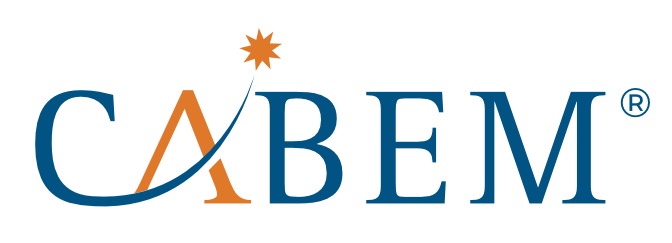Connecting Individual Skills to Organizational Objectives
In today’s dynamic and competitive business environment, organizations strive to optimize their human resources to achieve their strategic objectives. One powerful tool that enables them to do so is “Competency Mapping.” Competency mapping is a systematic process that identifies and evaluates the key competencies required for various roles within an organization. Competency mapping is key to alignment in the workplace.
A competency can be defined as a combination of knowledge, skills, abilities, and behaviors that an individual must possess to perform a particular job effectively. It goes beyond just technical expertise and includes soft skills, personal attributes, and traits that contribute to success in the role. In this blog, we will explore the process of competency mapping and how it serves as a bridge between individual skills and organizational goals.
The Competency Mapping Process
The process of competency mapping typically involves the following steps:
- Job Analysis: Understanding the responsibilities, tasks, and challenges associated with each role in the organization. This step requires collaboration with subject matter experts and stakeholders to gather comprehensive insights.
- Competency Identification: Identifying the essential competencies that are critical for success in each role. These may vary from one role to another, even within the same department.
- Competency Definition: Clearly defining each competency, outlining the knowledge, skills, behaviors, and attributes that make up that particular competency.
- Competency Assessment: Evaluating the proficiency of employees in the identified competencies through various assessment methods, such as self-assessment, manager assessments, 360-degree feedback, and performance appraisals.
- Gap Analysis: Comparing the current competency levels of employees with the desired levels for their respective roles, highlighting areas where improvement or development is needed.
Now, let’s understand how competency mapping connects individual skills to organizational objectives:
Aligning Individual Skills with Organizational Goals
By identifying the competencies needed for each role, organizations ensure that their workforce possesses the right skills and abilities to meet strategic objectives. By ensuring that employees possess the required competencies for their respective roles, organizations create a more efficient and effective workforce. Employees who possess the necessary skills and abilities to excel in their roles are more likely to produce high-quality work, make informed decisions, and execute tasks with precision. They are also better equipped to handle challenges and adapt to changes in the business environment.
When employees’ competencies align with the organization’s goals, a sense of purpose and shared direction emerges among the workforce. Employees understand how their individual contributions fit into the larger picture and how their efforts directly impact the organization’s success. This understanding fosters a stronger sense of commitment and dedication among employees, leading to increased engagement and job satisfaction.
Targeted Training and Development
Competency mapping serves as a powerful diagnostic tool, shedding light on skill gaps that may exist within the organization’s workforce. When organizations assess the competencies of their employees against the desired standards for their respective roles, they can identify areas where performance falls short or where specific skills are lacking. This valuable insight empowers organizations to take proactive measures to bridge these skill gaps and elevate employee capabilities. By understanding the areas that require improvement, they can tailor targeted training and development programs that address the identified competency deficiencies. These programs are designed to focus on enhancing the specific skills and knowledge needed to excel in particular roles or to align with the organization’s strategic direction.
As a result, employees can acquire the necessary expertise to perform their duties more effectively, boosting their confidence and job satisfaction. A workforce that continuously improves its competencies through such targeted interventions contributes to improved overall employee performance and productivity, ultimately benefiting the organization as a whole.
Performance Management
Competency mapping plays a pivotal role in setting clear and objective performance standards for every role within the organization. By identifying the essential competencies necessary for each job, organizations can outline the specific skills, knowledge, behaviors, and attributes that define success in those positions. These well-defined performance standards serve as a benchmark against which employee performance can be measured. Managers can then utilize the data obtained from competency mapping assessments to evaluate individual performance in an objective and fair manner. This data-driven approach removes subjective biases, creating a more transparent and equitable evaluation process.
When managers have access to comprehensive information about employees’ competencies and performance, they can offer constructive feedback that is tailored to address specific areas of improvement. This feedback becomes more actionable and relevant, enabling employees to focus their efforts on developing the right skills and competencies to excel in their roles. As a result, employees are more motivated and empowered to enhance their performance, contributing to a culture of continuous improvement and growth within the organization.
Succession Planning
Identifying key competencies for critical roles is instrumental in fostering effective succession planning within organizations. Succession planning aims to ensure that the organization has a pool of qualified and capable individuals ready to step into key leadership or specialized positions when the need arises. Through competency mapping, organizations can pinpoint the specific skills, knowledge, and attributes required to excel in these critical roles. This allows them to identify potential successors who possess the necessary competencies and potential for growth and leadership. By understanding the competency profiles of potential successors, organizations can strategically develop and groom these individuals for future leadership positions.
This proactive approach to succession planning ensures a smooth transition during leadership changes, minimizing disruptions and maintaining continuity in crucial decision-making processes. Moreover, providing clear career paths and development opportunities to potential successors based on their competency profiles fosters a sense of engagement and loyalty, encouraging top talent to stay within the organization and contribute to its long-term success. Ultimately, effective succession planning driven by competency mapping strengthens the organization’s overall resilience and adaptability, preparing it for the challenges and opportunities that lie ahead.
Recruitment and Selection
Competency mapping serves as a valuable tool during the hiring process, providing a structured and objective framework to assess candidates’ suitability for specific roles within the organization. By clearly defining the key competencies required for each position through the competency mapping process, hiring managers can align the job requirements with the candidates’ qualifications, skills, and experiences. This alignment ensures that the chosen candidates possess the essential competencies necessary for success in their respective roles from the very beginning.
As a result, organizations are more likely to hire candidates who are well-suited for the job and can quickly contribute to the team and the organization’s overall objectives. This approach reduces the risk of misaligned hires, turnover, and the need for extensive onboarding or training to compensate for competency gaps.
Employee Engagement and Career Growth
When employees recognize that their skills and competencies are not only acknowledged but also directly aligned with the organization’s goals, it fosters a sense of validation and purpose. Feeling valued for their unique abilities boosts employees’ confidence and satisfaction, leading to increased engagement and motivation in their roles. They become more invested in the organization’s success and are more likely to go above and beyond to contribute meaningfully. Competency mapping plays a crucial role in this process by making it clear to employees that their talents are an integral part of the company’s strategic vision.
Competency mapping also serves as a foundation for creating well-defined career development pathways within the organization. By identifying the competencies required for advancement in different roles and career stages, employees gain clarity about the skills they need to develop to progress within the company. This transparency encourages employees to take ownership of their professional growth and seek out opportunities for skill enhancement and career advancement. As they see a clear and structured path for their development, employees are more motivated to participate in training programs, take on new challenges, and acquire additional competencies. The availability of these growth opportunities contributes to higher employee retention rates as individuals feel that their aspirations are aligned with the organization’s support for their personal and professional development.
Competency mapping is a valuable tool that helps organizations connect individual skills to their broader objectives. It not only fuels employee engagement and motivation but also acts as a catalyst for a thriving and dynamic workforce that is continually evolving to meet both individual and organizational aspirations.
Competency Management Software Makes Competency Mapping Easier
Competency management software plays a pivotal role in facilitating effective competency mapping within an organization. This specialized software offers a centralized and streamlined platform to manage, assess, and track competencies across various roles and departments. It simplifies the entire competency mapping process by automating data collection, analysis, and reporting, reducing the administrative burden on HR teams and managers. With competency management software, organizations can easily identify the key competencies required for each role, ensuring a comprehensive understanding of the skills and knowledge needed for success. The software allows for the creation of competency frameworks and standardizes competency definitions, promoting consistency and accuracy in the evaluation process.
By storing employee competency profiles and performance data in a secure and accessible database, the software enables managers to conduct objective assessments and make informed decisions during performance evaluations, succession planning, and talent development initiatives. Furthermore, competency management software enables the creation of personalized career development pathways for employees, empowering them to take charge of their professional growth and align their skills with organizational objectives.
An automated skill matrix as part of a competency-based training program can be used to track, measure, and visualize data in real-time. It allows organizations to gather a balanced and successful team in which everyone has their strengths and weaknesses. Finding people with complementary competencies will improve employee engagement and job performance.
CABEM’s Competency Manager includes powerful reporting capabilities out of the box. Their skills matrix, called the interactive Activity Grid, is a skills inventory that makes it easy to zero in on user progress toward completion. The Activity Grid allows Managers, Mentors, and System Administrators to view the details of a user’s progress for all assignments, as well as the ability to act through approval signoffs, assessments, and multiple other actions right from within the same screen. Discriminating filters provide the most efficient way of accessing important business intelligence in real-time.
If training, competency mapping, and quality assurance are top priorities for your organization, but your competency management doesn’t feel credible, isn’t repeatable, or leaves your team feeling uneasy as they prepare for audits, CABEM can help. If you would like to learn more, please visit our website and schedule a call today.

